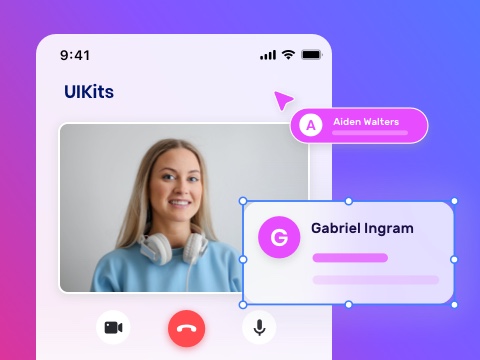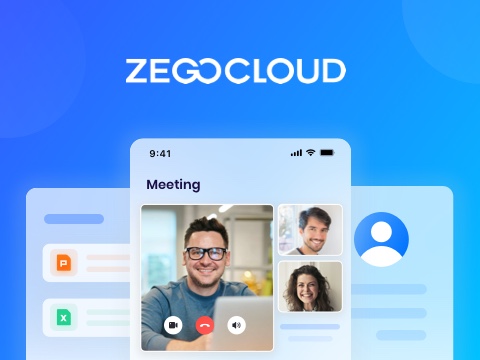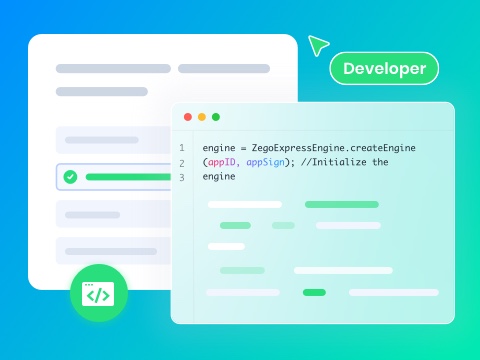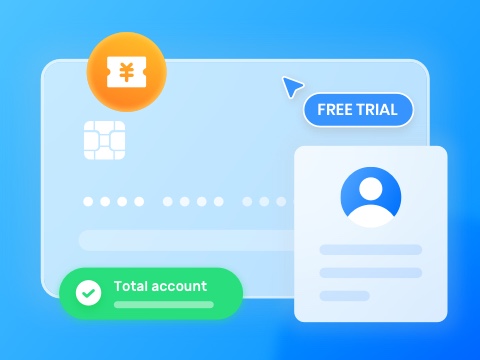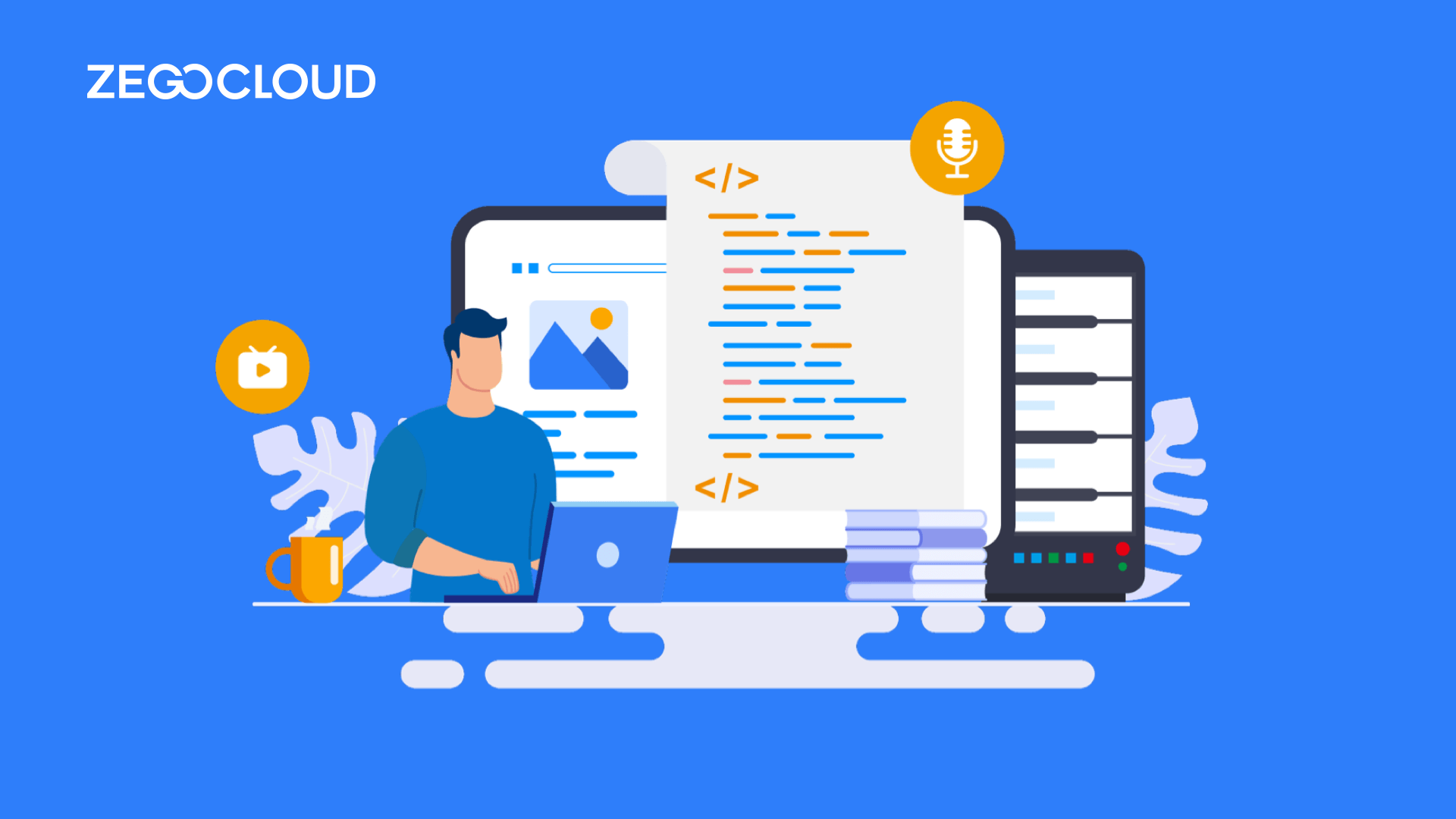In real-time communication applications, maintaining high call quality is essential for a smooth user experience. Call quality monitoring helps developers track metrics like latency, jitter, packet loss, and network stability. By integrating an effective monitoring system, you can quickly identify issues, optimize performance, and ensure consistent voice and video quality across different network conditions. This article explains how to add call quality monitoring to your app and how ZEGOCLOUD’s RTC SDK simplifies the process with built-in analytics and diagnostic tools.
What is Call Quality Monitoring?
Call quality monitoring refers to the process of measuring and analyzing key indicators that determine the performance of a real-time communication system. These indicators usually include latency, jitter, packet loss, and bitrate, which together reflect how smooth and stable a voice or video call is.
By continuously tracking these metrics, developers can detect issues early, identify weak network points, and improve the overall reliability of calls. Using platforms such as ZEGOCLOUD’s RTC SDK makes it easier to integrate monitoring features into your application. It also provides built-in tools for visualizing data, sending alerts, and conducting post-call analysis, helping you maintain excellent communication quality for all users.
Why Call Quality Monitoring Matters?
In real-time communication, even a small drop in quality can affect user satisfaction and retention. A delay of just a few hundred milliseconds or a sudden loss of audio can cause frustration and reduce trust in your platform. Call quality monitoring gives developers the visibility they need to understand how their app performs under different network conditions and device types.
With accurate performance insights, teams can identify whether issues come from poor connectivity, hardware limitations, or server overload. Businesses also gain the ability to make data-driven improvements, ensuring that calls remain clear and stable regardless of user location. By using tools like ZEGOCLOUD’s RTC SDK, developers can monitor call metrics in real time, analyze patterns, and deliver smoother communication experiences across all devices and platforms.
How to Add Call Quality Monitoring to Your App
ZEGOCLOUD Express-Video SDK provides the ability to monitor the streaming quality during stream publishing and stream playing. After stream publishing or stream playing is started, the SDK triggers the corresponding streaming quality callback every 3 seconds, and client applications can obtain real-time streaming quality data by listening for these callbacks.
Prerequisites
Before you monitor the streaming information, make sure you complete the following:
- Create a project in ZEGOCLOUD Admin Console, and get the AppID of your project.
- The ZEGOCLOUD Express SDK has been integrated into the project.
Monitor the quality of stream publishing
To monitor the quality of the stream publishing, listen for the onPublisherQualityUpdate callback. After stream publishing is started, this callback will be triggered every 3 seconds to provide the stream publishing quality data.
You can obtain stream publishing quality data through this callback to monitor the health of stream publishing in real time and display the upstreaming network quality on your application’s UI.
// You can focus on specific quality attributes and report them to your business server, or focus on a specific field of an object for giving friendly notes for users.
// The parameter 'quality' has many attributes. If you do not want to handle every one of them, you can just focus on the 'level' attribute, a comprehensive quality indicator calculated by the SDK based on other quality attributes.
- (void)onPublisherQualityUpdate:(ZegoPublishStreamQuality *)quality streamID:(NSString *)streamID {
}The stream publishing quality attributes in detail
The stream publishing quality includes the audio and video capture frame rate, bitrate, RTT, packet loss rate, and others of capturing and encoding stages of the stream publishing process.
The ZegoPublishStreamQuality object includes quality attributes of different stages of the stream publishing process. You can find the detailed attribute definitions in this section:
Quality attributes of audio and video capturing
The following attributes reflect the stream publishing quality of audio and video capturing, which is close to the user’s subjective perception of the local preview.
audioCaptureFPS: The audio capture frame rate (fps).videoCaptureFPS: The video capture frame rate (fps).
Quality attributes of video encoding
The stream publishing quality attributes of video encoding of the encoding stage is as follow:
videoEncodeFPS: The target output frame rate (fps) of video encoding.
Quality attributes of stream transmission
The stream publishing quality attributes below reflect the quality of stream transmission (sending), which is related to the encoding bitrate and the current network quality.
audioSendFPS: The actual audio transmission frame rate (fps).audioKBPS: The actual audio transmission bitrate (kbps).videoSendFPS: The actual video transmission frame rate (fps).videoKBPS: The actual video transmission bitrate (kbps).rtt: The rount-trip time (ms) from the client device to the ZEGOCLOUD server.packetLostRate: The client-side upstreaming packet loss rate.
Quality attributes of the total number of bytes
The stream publishing quality attributes below reflect the total number of bytes sent.
totalSendBytes: The total number of bytes sent, including audio, video, SEI.audioSendBytes: The number of audio bytes sent.videoSendBytes: The number of video bytes sent.
Quality attributes of encoding information
The stream publishing quality attributes below reflect the encoding information:
videoCodecID: The video codec.isHardwareEncoder: Whether to enable hardware encoding.
Quality attributes of published stream quality level
The parameter quality has many attributes. If you do not want to handle every one of them, you can just focus on the level attribute, a comprehensive upstreaming network qualityindicator calculated by the ZegoExpressEngine based on other quality attributes.
The following table describes the level fields:
| Field | Description |
| ZegoStreamQualityLevelExcellent | Streaming quality: Excellent |
| ZegoStreamQualityLevelGood | Streaming quality: Good |
| ZegoStreamQualityLevelMedium | Streaming quality: Fair |
| ZegoStreamQualityLevelBad | Streaming quality: Poor |
| ZegoStreamQualityLevelDie | Streaming quality: Abnormal |
Monitor the quality of stream playing
To monitor the quality of the stream playing, listen for the onPlayerQualityUpdate callback. After stream playing is started, this callback will be triggered every 3 seconds to provide the stream playing quality data.
- (void)onPlayerStateUpdate:(ZegoPlayerState)state errorCode:(int)errorCode extendedData:(NSDictionary *)extendedData streamID:(NSString *)streamID {
// You can focus on specific quality attributes and report them to your business server, or focus on a specific field of an object for giving friendly notes for users.
// The parameter 'quality' has many attributes. If you do not want to handle every one of them, you can just focus on the 'level' attribute, a comprehensive quality indicator calculated by the SDK based on other quality attributes.
}The stream playing quality attributes in details
The stream playing quality includes the audio and video frame rate, bitrate, delay, packet loss rate, and others of receiving, decoding, and rendering stages of the stream playing process.
The ZegoPlayStreamQuality object includes quality attributes of different stages of the stream playing process. You can find the detailed attribute definitions in this section:
Quality attributes of stream receiving
The stream playing quality attributes below reflect the quality of stream receiving, which is related to the quality of stream transmission (sending) and the current network quality.
audioRecvFPS: The actual audio receiving frame rate (fps).audioDejitterFPS: The audio dejitter frame rate (f/s).audioKBPS: The actual audio receiving bitrate (kbps).audioBreakRate: The actual received audio break rate (number of breaks / every 10 seconds).videoRecvFPS: The actual video receiving frame rate (fps).videoDejitterFPS: The video dejitter frame rate (f/s).videoKBPS: The actual video receiving bitrate (kbps).videoBreakRate: The actual received video break rate (number of breaks / every 10 seconds).packetLostRate: The client-side downstreaming packet loss rate, in percentage, 0.0 – 1.0.rtt: The round-trip time (ms) from the client device to the ZEGOCLOUD server.avTimestampDiff: The difference between the video timestamp and the audio timestamp, used to reflect the synchronization of audio and video, in milliseconds. This value is less than 0 means the number of milliseconds that the video leads the audio, greater than 0 means the number of milliseconds that the video lags the audio, and 0 means no difference. When the absolute value is less than 200, it can basically be regarded as synchronized audio and video, when the absolute value is greater than 200 for 10 consecutive seconds, it can be regarded as abnormal.peerToPeerDelay: The delay from peer to peer, in milliseconds.peerToPeerPacketLostRate: The packet loss rate from peer to peer, in percentage, 0.0 – 1.0.
Quality attributes of stream rendering
The stream playing attributes below reflect the streaming quality at the stream rendering stage, which is close to the viewer’s subjective perception. They are affected by the audio/video codec, and the values may be lower than the actual audio/video receiving frame rates.
audioRenderFPS: The audio rendering frame rate (fps).videoRenderFPS: The video rendering frame rate (fps).delay: The delay after the data is received by the local end, in milliseconds.
Quality attributes of the total number of bytes
The stream publishing quality attributes below reflect the total number of bytes received.
totalRecvBytes: The total number of bytes received, including audio, video, SEI.audioRecvBytes: The number of audio bytes received.videoRecvBytes: The number of video bytes received
Quality attributes of decoding information
The stream playing quality attributes below reflect the decoding information:
videoCodecID: The video codec.isHardwareDecode: Whether to enable hardware decoding.
Monitor the status of stream publishing/playing
Callback for updates on stream publishing status
After stream publishing starts, if the status changes, the SDK sends out the event notification through the onPublisherStateUpdate callback. To monitor the status of stream publishing, listen for this callback.
- (void)onPublisherStateUpdate:(ZegoPublisherState)state errorCode:(int)errorCode extendedData:(NSDictionary *)extendedData streamID:(NSString *)streamID {
// In this callback, when the [state] is [ZegoPublisherStateNoPublish] and the [errorCode] is not 0, indicates the stream publishing is failed. And the SDK won't retry to publish the stream. At this time, user can set a corresponding UI to indicate the current state.
// In this callback, when the [state] is [ZegoPublisherStatePublishRequesting] and the [errorCode] is not 0, indicates the stream publishing retry is ongoing. But if the stream publishing retry still fails after the default reconnection duration, it won't try again and will send out a failure notification.
}You can determine the user’s network status during stream publishing based on the state property.
The following table describes the value of the state property and the corresponding user status:
| Enumerated value | Description |
|---|---|
| ZegoPublisherStateNoPublish | This state indicates no streams published, which appears before a stream publishing. This state also appears if a steady-state exception occurs during the stream publishing operation, for example, the AppID and Token are incorrect, or the stream with the same ID is already published by another user. |
| ZegoPublisherStatePublishRequesting | This state indicates a stream publishing is being requested, which appears when you perform the stream publishing operation successfully. (Generally, the user can set a corresponding UI to indicate the current state.) This state also appears when the SDK automatically tries to recover the operation when stream publishing failed due to network errors. |
| ZegoPublisherStatePublishing | This state indicates a stream is being published, which appears when a stream is published successfully. In this state, users can communicate normally. |
The parameter extendedData provides extended information for status updates. If you are using the ZEGOCLOUD CDN, the key of this parameter is flv_url_list, rtmp_url_list, and hls_url_list, which correspond to the stream playing URL of FLV, RTMP, and HLS protocols respectively.
Callback for updates on stream playing status
After stream playing starts, if the status changes, the SDK sends out the event notification through the onPlayerStateUpdate callback. To monitor the status of stream playing, listen for this callback.
- (void)onPlayerStateUpdate:(ZegoPlayerState)state errorCode:(int)errorCode extendedData:(NSDictionary *)extendedData streamID:(NSString *)streamID {
// In this callback, when the [state] is [ZegoPlayerStateNoPlay] and the [errorCode] is not 0, indicates the stream playing is failed. And the SDK won't retry to play the stream. At this time, user can set a corresponding UI to indicate the current state.
// In this callback, when the [state] is [ZegoPlayerStatePlayRequesting] and the [errorCode] is not 0, indicates the stream playing retry is ongoing. But if the stream playing retry still fails after the default reconnection duration, it won't try again and will send out a failure notification.
}You can determine the user’s network status during stream playing based on the state property.
The following table describes the value of the state property and the corresponding user status:
| Enumerated value | Description |
|---|---|
| ZegoPlayerStateNoPlay | This state indicates no streams played, which appears before a stream playing. This state also appears if a steady-state exception occurs during the stream playing operation, for example, the AppID and Token are incorrect. |
| ZegoPlayerStatePlayRequesting | This state indicates a stream playing is being requested, which appears when you perform the stream playing operation successfully. (Generally, the user can set a corresponding UI to indicate the current state.) This state also appears when the SDK automatically tries to recover the operation when stream playing failed due to network errors. |
| ZegoPlayerStatePlaying | This state indicates a stream is being played, which appears when a stream is played successfully. In this state, users can communicate normally. |
Callback on capturing the first frame of audio
To receive the event notification when the first frame of audio is captured, listen for the onPublisherCapturedAudioFirstFrame callback.
After stream publishing starts, the SDK sends out the event notification through this callback when the first frame of audio is captured.
When you enable stream publishing or local preview for the first time, the SDK engine starts to capture the audio data of the local device, and the SDK sends out event notification through this callback. You can tell whether the audio data has been captured successfully according to the returned event notification. If no notifications are received, it means the audio device is being used or the device is abnormal.
- (void)onPublisherCapturedAudioFirstFrame {
}Callback on receiving the first frame of audio
To receive the event notification when the first frame of audio is received, listen for the onPlayerRecvAudioFirstFrame callback.
After stream playing starts, the SDK sends out the event notification through this callback when the first frame of audio is received.
- (void)onPlayerRecvAudioFirstFrame:(NSString *)streamID {
}Monitor the status of the stream forwarding via CDN
Callback for updates on the status of CDN URL
To receive event notification when the specified CDN URL changes (adds new URL or removes existing URL), listen for the onPublisherRelayCDNStateUpdate callback.
After the ZEGOCLOUD RTC Server forwards the stream to CDN, the SDK sends out event notification when the status of streams forwarded to CDN changes, for example, the stream forwarding stops or the forwarding operation retries.
You can tell whether the audio and video streams forwarded to CDN are normal according to this callback: – If the returned result of this callback indicates it is abnormal, locate the cause of the audio and video streams forwarded to CDN and perform a disaster recovery operation accordingly. – If you do not know the cause of the exception, contact ZEGOCLOUD technical support for further analysis.
- (void)onPublisherRelayCDNStateUpdate:(NSArray<ZegoStreamRelayCDNInfo *> *)infoList streamID:(NSString *)streamID {
}The stream forwarding attributes in details
The stream forwarding information includes the CDN URL, forwarding status, the cause of stream forwarding status, and when the status changes.
The ZegoStreamRelayCDNInfo object includes stream forwarding attributes. You can find the detailed attribute definitions in this section:
| Parameter | Description |
| url | The CDN URL that the streams be published to. |
| state | The status of stream forwarding. |
| updateReason | The cause of stream forwarding status changes. |
| stateTime | When the stream forwarding status changes. |
The following table describes the value of the state property:
| Enumerated value | Description |
|---|---|
| ZegoStreamRelayCDNStateNoRelay | This state indicates no streams forwarded to CDN, which appears before a stream forwarding. This state also appears if an exception lasting for a while, for example, the CDN URL is incorrect. |
| ZegoStreamRelayCDNStateRelayRequesting | This state indicates a stream forwarding is being requested, which appears when you perform the stream forwarding operation successfully. (Generally, the user can set a corresponding UI to indicate the current state.) This state also appears when the SDK automatically tries to recover the operation when stream forwarding failed due to network errors. |
| ZegoStreamRelayCDNStateRelaying | This state indicates a stream is being forwarded to CDN, which appears when a stream is forwarded to CDN successfully. |
The following table describes the value of the updateReason property:
| Enumerated value | Description |
| ZegoStreamRelayCDNUpdateReasonNone | None |
| ZegoStreamRelayCDNUpdateReasonServerError | Server error. |
| ZegoStreamRelayCDNUpdateReasonHandshakeFailed | Handshake failed. |
| ZegoStreamRelayCDNUpdateReasonAccessPointError | Access point error. |
| ZegoStreamRelayCDNUpdateReasonCreateStreamFailed | Failed to create a stream. |
| ZegoStreamRelayCDNUpdateReasonBadName | Bad name. |
| ZegoStreamRelayCDNUpdateReasonCDNServerDisconnected | The CDN server initiates a disconnect. |
| ZegoStreamRelayCDNUpdateReasonDisconnected | Disconnected. |
| ZegoStreamRelayCDNUpdateReasonMixStreamAllInputStreamClosed | All input stream mixing sessions closed. |
| ZegoStreamRelayCDNUpdateReasonMixStreamAllInputStreamNoData | No data exists in all input mixed streams. |
| ZegoStreamRelayCDNUpdateReasonMixStreamServerInternalError | Internal error occurred on stream mixing server. |
Conclusion
Call quality monitoring is an essential part of building reliable communication experiences. By tracking metrics such as latency, jitter, packet loss, and bitrate, developers can maintain stable voice and video performance even under complex network conditions. A well-designed monitoring system helps detect problems early, improve overall quality, and enhance user satisfaction.
With ZEGOCLOUD’s RTC SDK, developers can easily integrate real-time call monitoring and analytics without building everything from scratch. It provides the tools and data you need to ensure every call on your platform is smooth, clear, and consistent. Start using ZEGOCLOUD today to deliver better real-time communication experiences.
FAQ
Q1: What is call quality monitoring?
Call quality monitoring is the process of tracking and analyzing metrics such as latency, jitter, packet loss, and bitrate to evaluate the performance of real-time communication. It helps ensure that voice and video calls remain clear, stable, and reliable.
Q2: How do you measure call quality?
You can measure call quality by monitoring network and audio metrics, including latency, jitter, packet loss rate, and Mean Opinion Score (MOS). These indicators reflect how users experience your communication service in real time.
Q3: Who can perform call quality monitoring?
Developers, network administrators, and businesses that provide real-time communication services can all perform call quality monitoring. They use specialized tools or SDKs such as ZEGOCLOUD’s RTC SDK to collect, analyze, and visualize performance data.
Q4: What is call monitoring?
Call monitoring is the broader process of observing and reviewing voice or video communication sessions for quality assurance, training, or compliance. It can include live observation, recording analysis, and automated quality evaluation based on predefined standards.
Let’s Build APP Together
Start building with real-time video, voice & chat SDK for apps today!


